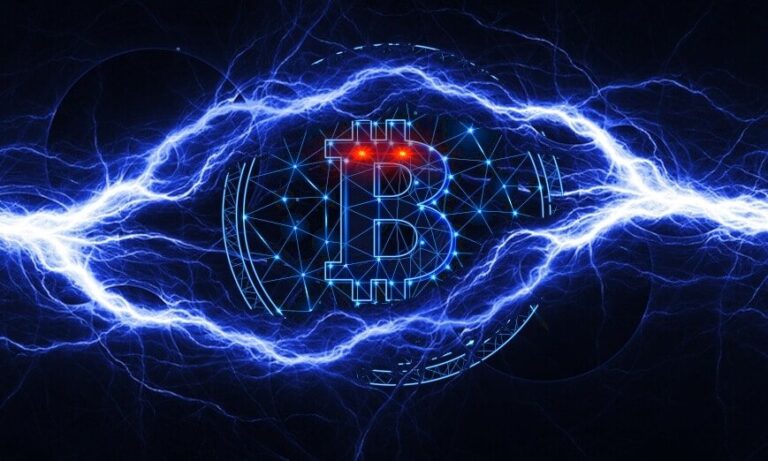
Bitcoin is recovering despite monetary tightening which obviously does not have the expected results vis-à-vis inflation.
Oil, geopolitics and printing money
Let’s start by celebrating the independence day of the bitcoin. We celebrated this Monday August 1st the soft fork which sounded the end of the “Big Block War”. Back then (2017), Bitmain wanted to increase the block size via a hard fork. This ultimately led to the creation of Bitcoin Cash.
The goal was to increase transaction throughput. Difficult indeed to oil world trade with seven transactions per second. Except that the inevitable increase in the size of nodes destroy its decentralization due to hard drive costs. This false good idea was logically rejected. The Lightning Network has since fixed the problem.
Parenthesis closed. Let’s come to BTC/USD. We have managed to claw back as the FED continues to raise the cost of money. Moody’s expects the key rate to reach 4% by March 2023.
The ECB has also started tuning fork. Backwards. Christine Lagarde said it: raising rates will not be able to counter the immense inflation that Russia can cause at leisure by turning off the gas tap.
In addition, the ECB has already promised that it will run the printing press to ensure that government borrowing rates do not soar…
The United States is somewhat less vulnerable given its fragile energy independence. However, inflation is as high there as in Europe (9% per year). Which suggests that the worst is yet to come for our old continent devoid of fossil fuels.
And then, the damage is already done. As Karl Otto Pöhl, former President of the Bundesbank, said:
“Inflation is like toothpaste: once out of the tube, you can’t put it back in; thus, it is better not to press too hard on the tube”.
Replace “inflation” with “debt” and everything becomes clear. That of the French government has increased by 125% since the peak of conventional oil in 2007. During this time, real GDP (production) has almost stagnated (+10%)…
There are no secrets. Taking on so much debt in such a short time is a symptom of a declining economy sooner or later having a date with inflation. The EU is no longer deluded.
The fact that oil-producing countries are reluctant to produce more should also alert us. The sources of oil that are easiest to extract and closest to where they are needed have dried up, leaving us with ever more expensive deposits to exploit.
As such, closely follow the OPEC+ meeting this Wednesday. The “+” means that Russia will be present. And probably she will quietly pressure the cartel not to invest more in her production capacities.
“I don’t think they will do much”said Christof Ruhl, an analyst at Columbia University’s Center on Global Energy Policy. “They will be content with fine words without doing much more in fact”. “They genuinely worry about a recession.”
“It is absolutely not known to what extent Saudi Arabia will increase its production”energy expert Jan Stuart told Bloomberg. “The Saudis never want to give the impression that they are giving Americans any special treatment.” “Anyway, we don’t think Riyadh has that much leeway. [pour rehausser sa production]. »
In other words, energy prices are unlikely to subside. Especially since this inflation serves the strategy of Russia which urges the world to stop using the dollar.
Foreign Minister Sergey Lavrov was clear before the African Union last week:
“If the United States and the European Union – at the request of the United States – have decided to freeze Russian foreign exchange reserves – and they are now seriously starting a legal process to confiscate this money – who knows… They could do the same to someone else tomorrow or the day after. I have no doubt that they will not hesitate to freeze the reserves of any other country that irritates them in one way or another. Frankly speaking, reliance on the dollar as an international currency is not very promising. It is no coincidence that more and more countries are turning to the use of alternative currencies. Including their own national currencies. This process will accelerate. »
Mr. Lavrov made the same remarks a few days earlier against the 22 countries of the Arab League.
We are in the middle of a monetary, energy and military war. In this context, why get rid of your bitcoins? Isn’t it the most serious candidate for the reserve currency of a multipolar world?
Not to mention that inflation largely depends on factors over which central banks have no control. Raising rates will not magically cause oil to gush out in New York.
Worse, in the United States, the rise in interest rates could prove to be a blow for the shale oil industry which was already unable to make money with rates at the floor…
Let’s finish with the Taiwanese imbroglio which could well push China into economic reprisals which bode very badly for inflation. Not to mention the fact that Taiwan is the world leader in semiconductors…
HODL!
GlassNode Weekly On-Chain Analysis Summary
Unfortunately, GlassNode observes that “Current network activity suggests demand for BTC is struggling to build.”
The number of active addresses continues to trend downwards. On a weekly average, approximately 900,000 addresses are active. This figure was 1.1 million last November, when bitcoin was worth more than $70,000.
The number of transactions per second and the fees also lack the power to suggest that a bull run would be imminent. Only 3 transactions per second on average and 13 BTC per day collected in transaction fees by miners.
But the bull market usually come with high fees. These latter “are often one of the first signs of a recovery in demand”, recalls GlassNode. And here’s a graph to prove it:

Note that SegWit has increased the maximum capacity of transactions per block, which has reduced transaction fees.
It should also be taken into account that the growth of the Lightning Network, which allows transactions to be carried out off chain. More and moreexchanges and of wallets connected to it.
GlassNode pointed this out in its report:
“On a more positive note, the Lightning Network continues to grow. There are now more than 4,400 BTC there. An increase of 19% over the last two months, despite the bear market. This metric […] is a good gauge of the network effect. »
The network effect is very important since according to Metcalfe’s law, the value of a network is proportional to the square of the number of users.
In sum, GN believes that “Beneath the surface, observed on-chain demand remains lackluster.” “This recovery has not yet been followed by a convincing rebound in metrics intimately linked to demand.”
So much the better ! A slow bullish recovery will allow for great shopping at dirt cheap. In addition, do not miss this article on the SEC which has just declared war on Coinbase and shitcoins.
Receive a digest of news in the world of cryptocurrencies by subscribing to our new daily and weekly newsletter service so you don’t miss any of the essential Tremplin.io!






